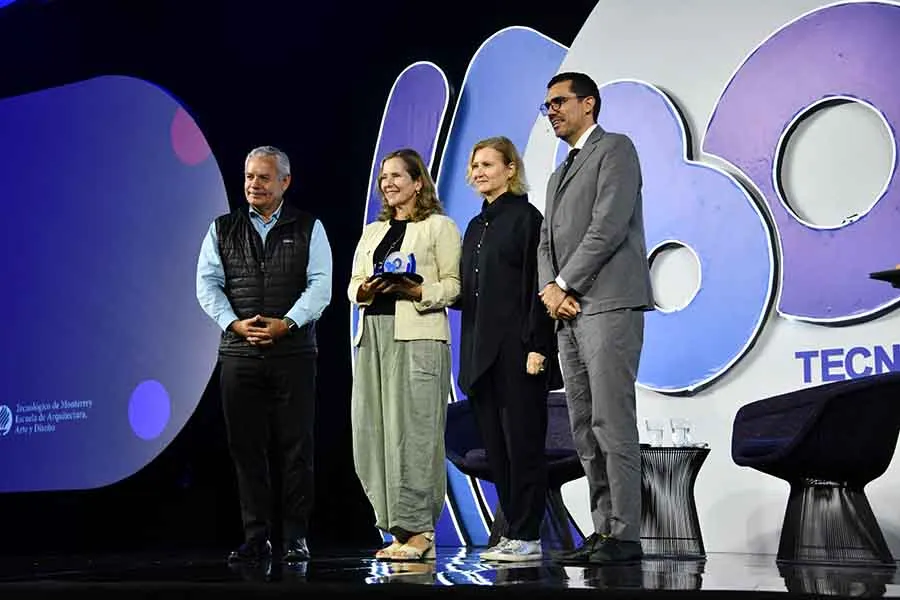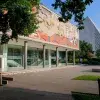Italian architect Paola Antonelli explained that it is part of a designer’s job to think about design as an agent of change for tackling current issues, whether they be political, social, or cultural.
“Design is really important because you can use it to explain hidden truths to your audience.
“Think about the political posters during the Black Panther group’s period of activism in the United States. They were subtle yet powerful political acts,” said Antonelli during her talk, Rules of Design: Activism, Idealism, Cynicism, and Pragmatism in Contemporary Design.
Held at the Monterrey campus Conference Center, the talk took place during Tec de Monterrey’s 80th anniversary celebrations, as well as being part of the Inspire to Transform series.

Paola Antonelli is founding Director of Research and Development at New York’s Museum of Modern Art (MoMa). Her work investigates design in all its forms with the aim of promoting people’s understanding of it.
Named one of the 25 most incisive design visionaries in the world by TIME magazine, she has been inducted in the Art Directors Club Hall of Fame and has won the German Design Award.
For Antonelli, “Design is our best weapon for communication,” to which she added “You must understand that when I say ‘politics,’ I don’t mean being part of a political party. Politics means living together.
“That’s why politics should be used more in design. One of our greatest challenges is educating people so that they don’t think design is limited to creating a chair or an object,” she explained.
Design shouldn’t just be about being beautiful, she added, but rather it should reflect the political and social dynamics of our time.
Her vision as a curator and designer has been reflected in exhibitions such as the 2019 XXII Triennale di Milano: Broken Nature, which was devoted to the idea of restorative design.
“Design is our best weapon for communication.” - Paola Antonelli
Design with perspective
“When the first 3D-printed gun came out, I was surprised because I was naive in thinking that design was only used for good things,” she explained.
This news inspired Antonelli to create an exhibition that presented two sides to design. On the one hand, there is a sense of elegance, and on the other, there is the danger or violence it could exert.
In 2015, the curator created the Design and Violence project together with design researcher Jamer Hunt.
“Over a year and a half, MoMA posted different objects related to violence via a web platform every week, along with a written response by a related expert.
“The project was unique because we sparked debate among people on issues of compassion, violence, and other topics,” she said.

Limits and responsibility in design
“There is no limit to design,” said Paola Antonelli when asked if designers should avoid using controversial topics as inspiration for their projects.
She also reflected on the importance of understanding design as a crucial means of dialogue with the complexities of the modern world.
“Design is about life, about society. No topic should be taboo, but of course that depends on the culture.
“However, I don’t think there should be limits because this has to do with freedom of expression. Instead, we have to think about where the responsibility of designers begins,” she said.
A designer’s responsibility, she added, begins with the goal you’re planning on achieving.
“This is a topic that architects are familiar with. Think about those who designed architectural structures for fanatical regimes. It’s a topic that mixes idealism with morality,” she said.
“Design is about life, about society. No topic should be taboo.”
Design as a social actor
Design Emergency is another project shared by Antonelli during her presentation, which focuses on the role of design in major global emergencies.
“I started this initiative just when the (COVID-19) pandemic began in 2020 in collaboration with Alice Rawsthorn.
“We started with a podcast on which we chatted with designers like Alissa Eckert, who was the person who gave a face to the coronavirus. She was the creator of the first image we saw of the virus worldwide,” she said.

Looking at current design challenges
There was also a Q&A session during her talk, which was moderated by modern and contemporary design expert Ana Elena Mallet, a Distinguished Professor who is also part of the Faculty of Excellence initiative at Tec de Monterrey.
“Listening to Paola deeply moved me because she made us see that design does make a difference in the present-day world. She showed us that design can change everything,” said Mallet.
The expert asked Paola Antonelli about the current challenges that designers must face.
“We must create a culture of design, make people understand it, because design is everywhere we look,” she said.
This event was also part of the Creative Leaders program, created in 2017 at the School of Architecture, Art, and Design (EAAD), whose goal is to invite renowned and prestigious creative leaders to share their experiences and projects related to all EAAD disciplines.

Inspire to Transform
Paola Antonelli is the latest guest to participate in this series of conferences held by the institution with the aim of creating spaces for conversation on the topics that are transforming the world.
Throughout 2023, this series of talks has been given on different Tec de Monterrey campuses with the participation of nationally and internationally renowned leaders.
“Hosting people like Antonelli enriches us as a community, since we share spaces for conversation to address topics that are transforming the world,” said Roberto Íñiguez, Dean of the Tec’s School of Architecture, Art, and Design.
YOU MAY ALSO BE INTERESTED IN READING:






